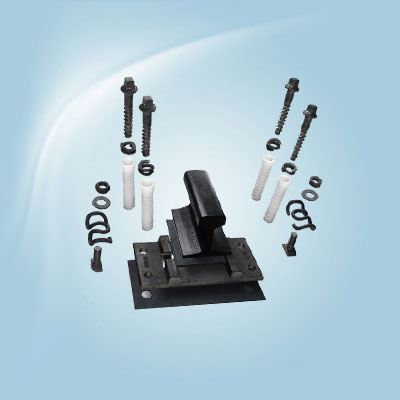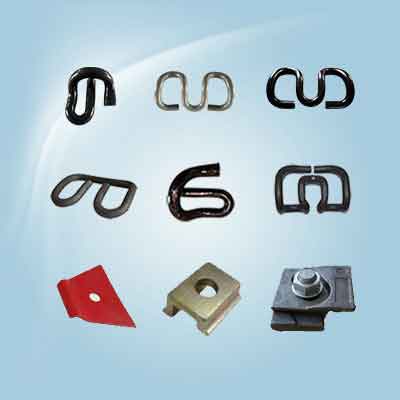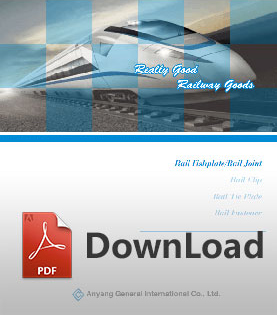Why railroad spikes will be corroded?

With 20 years’ experience in manufacturing railway fasteners like rail joint, rail clip, rail fastening system and other rail fasteners, AGICO Rail makes an analysis of railroad spikes corrosion.
Types of railroad spikes
Railroad spikes can be classified into many types according to the materials and performance. There are track spike, hexagon screw spike and the like. Among the various types of railroad spikes, the most common types are dog spikes and screw spikes. These railroad spikes have different usages, but the function of them is same.Blacksmithing railroad spike VS mechanical railroad spike
The common railroad spikes are divided into two categories, blacksmithing railroad spike and the mechanical railroad spike. Both of them are easy to handle and use, just use the railroad spike hammer to fix. But in term of the manufacturing technique, they have many differences. Blacksmithing railroad spike is the use of the hand-made way to make the railway spike. So the use of this production process will have a certain defect. For example, the surface will be partially raised, the weight of railroad spike will be more or less and the like. Mechanical railroad spike can be a good way to avoid these problems. But the corrosion is an inescapable topic.
Types of railroad spike corrosion
Pitting corrosion
Due to the railroad spikes are exposed to the atmosphere, the active anions (such as Cl-ions in the feces) are contained in the media. These active anions are adsorbed at certain points on the root surface of the railroad spike so that the passivation film of the metal surface is destroyed that resulting in the corrosion. Due to the anode area is very small, so the corrosion rate is fast.
Crevice corrosion
When the iron and iron or iron and other non-metallic surface forms a narrow gap, the movement of the material has been blocked in the gap, which will form a concentration of batteries, resulting in local crevice corrosion. In the medium, the oxygen concentration increases and the crevice corrosion increases; the pH decreases, the anodic dissolution rate increases and the crevice corrosion increases.
Stress corrosion
The rail is pressed against the sleeper by the railroad fasteners, and the railway fastener is pressed by the railroad spike, which is anchored to the sleeper and formed integrally with the sleeper. When the train through with high-speed, that will produce strong pressure, friction, horizontal force and elastic vibration to the rails. The railroad spike is both subjected to static tensile stress and the role of the cyclic stress when the train passes.
The process of the railroad spikes has three stages. The first stage is the incubation period. During this period, due to the localization of the corrosion process and the effect of tensile stress, the cracks disappear.
The second stage is the development of corrosion cracking. In the third stage, due to the local concentration of tensile stress, the rapid growth of cracks led to the destruction.
Causes of corrosion
Atmospheric relative humidity
Generally, the greater the relative humidity, the more likely to form a water film on the surface of the railroad spike, the longer the membrane remains, so the more likely the atmospheric corrosion.
Temperature
Because the existence of temperature difference will promote the water vapor in the iron surface to form a water film, that provides a corrosion conditions.
Protection measures
All in all, the railroad spike is easy to be corroded. How to avoid corroding and prolong the service life of railroad spike?Firstly, we choose railroad spikes carefully. In order to avoid the corrosion, you can choose the alloy material of railroad spike. The use of anti-corrosion spikes is an effective way to prevent spike corrosion. more specific traetment at how to protect railroad spike from corrosion?
Secondly, we can smear anti-corrosive coating. In term of this part, the AGICO Rail has the advanced technology. As a supplier of the railroad spike, they provide many types of railroad spikes. Besides, the surface of the railroad spike can be customized. Natural, Zinc, Paint, Oil and others materials, AGICO supports all of them. What’s more, AGICO Rail provides the customization service. Customers can customize railroad spikes according to their needs.
You may also like:
- How to choose railroad spike?
- Do you really know screw spike?
- How Much Are Railroad Spikes Worth?
- Where to find railroad spike?
- How to Protect Railroad Spike from corrosion
- Seasonal and Environmental Impact on Railroad Spikes
- Railroad Spike Materials Overview - Carbon Steel and Structural Steel
- Typical Railroad Spike Art Overview - Railroad Spike Knife, Bottle Opener and Furniture
- Rail Fasteners
- rail fastening system
- rail clip
- railroad spike
- Track bolt
- rail shoulders
- rail anchor
- rail clamp
- tie plate
- Rail Pad
- rail insulator
- rail plastic dowel
- other rail fasteners
- Railway Switch
- SKL series rail fastening system
- Chinese standard rail fastening system
- screw spikes
- Crane rail fastening system
- K type rail clip for Africa
- Hey-Back Rail Fastening
- rail fasteners for Mexican market
- Ss25 screw spike
- Ss35 rail sleeper screw spike
- Ss8 screw spike
- coach screw
- Crane Rail Clip
- Rail Joints (Fishplate)
- Steel Rail
- Railway Sleeper
 rail clip
rail clip
 rail joints
rail joints

 Español
Español English
English
